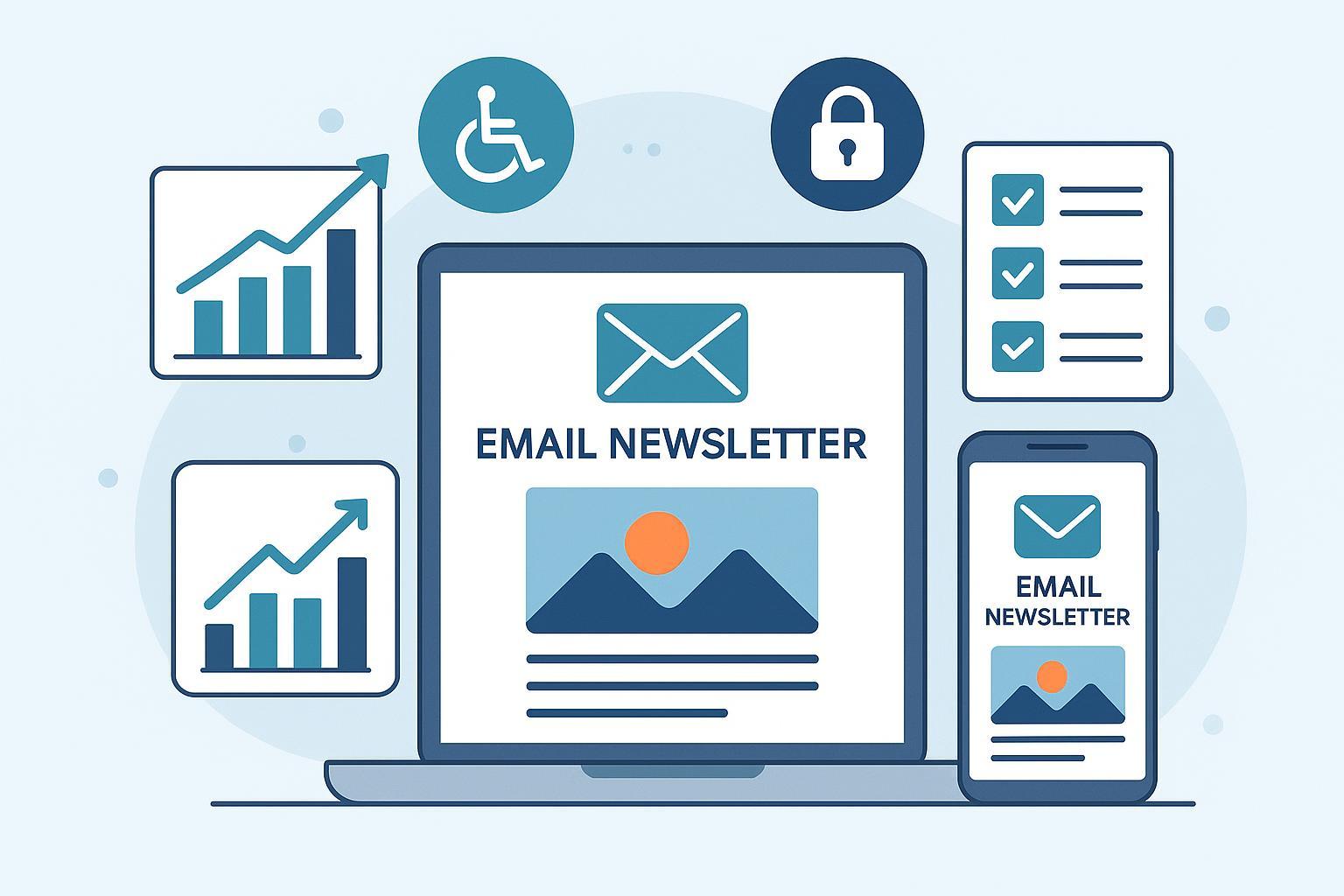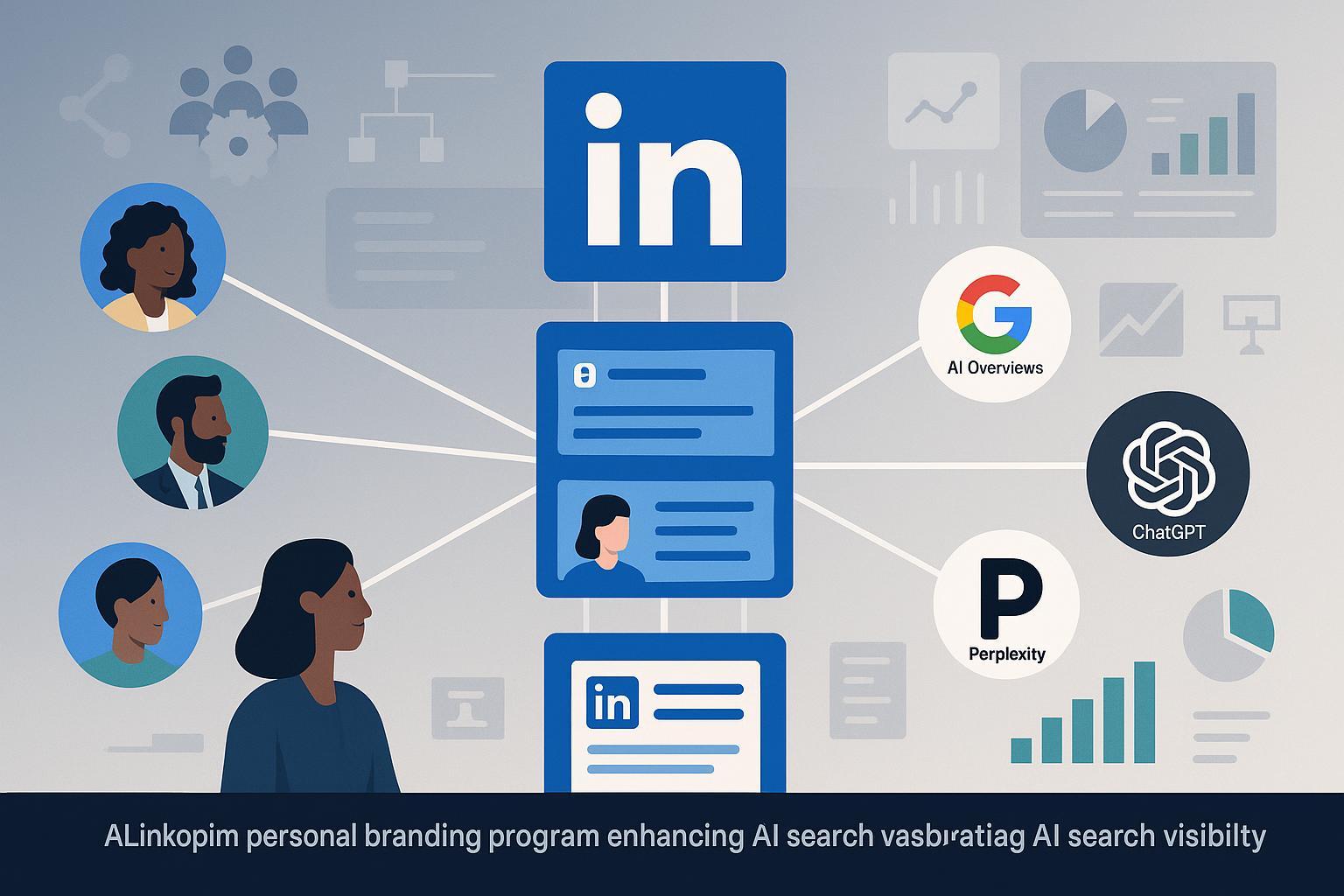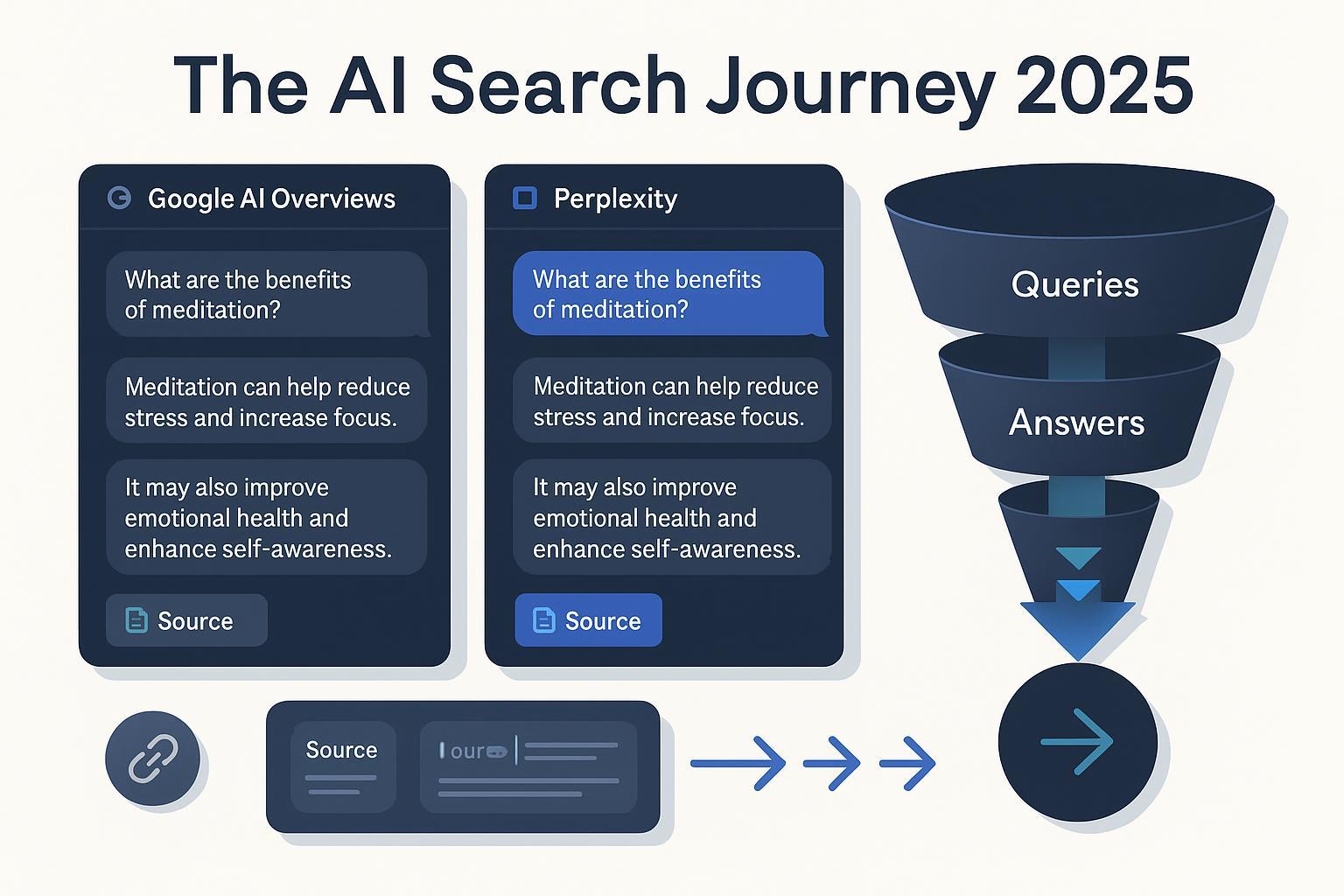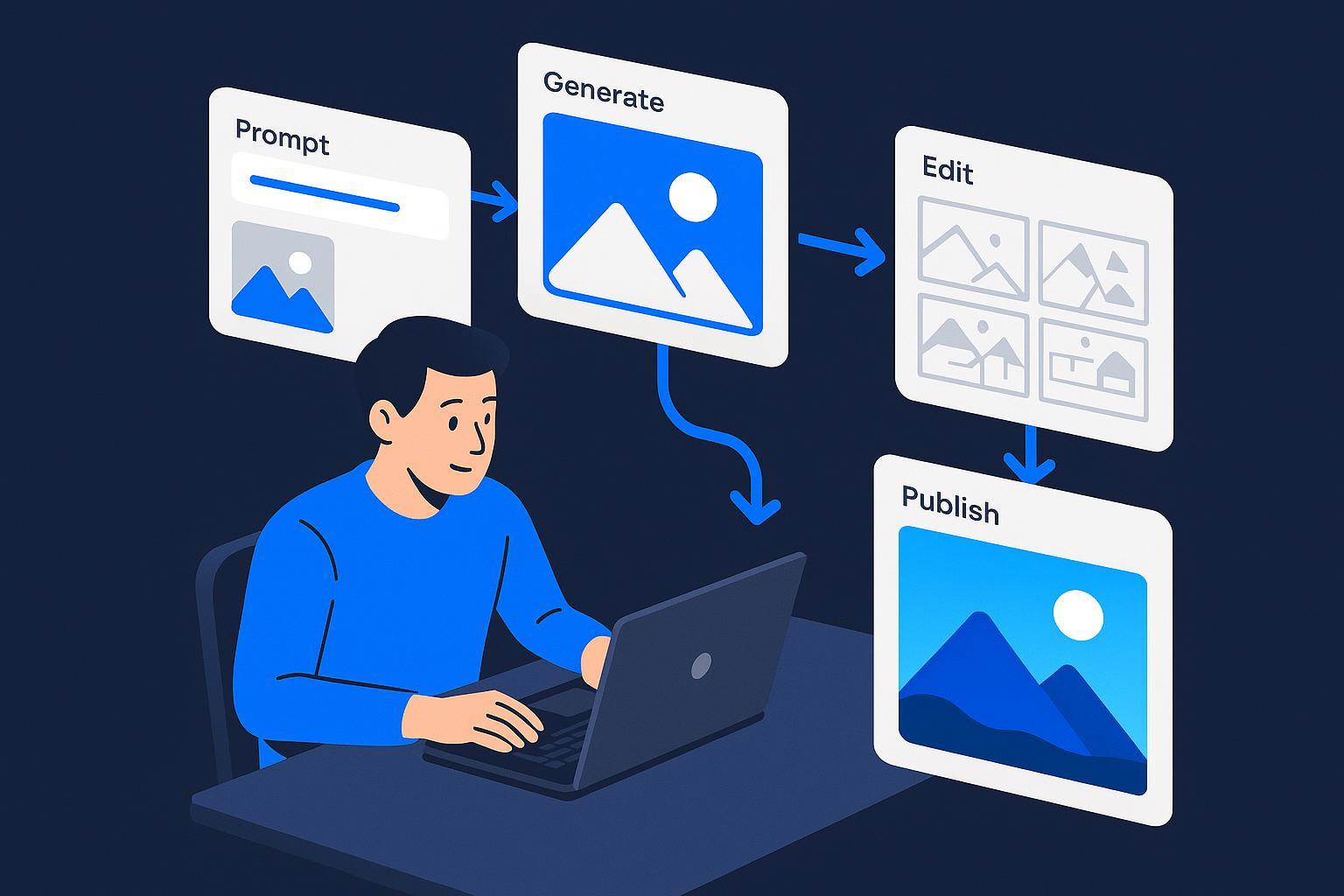Email Newsletter Best Practices 2025: Boost Deliverability & Engagement
Discover expert email newsletter best practices for 2025. Improve deliverability, audience engagement, and compliance with actionable, data-driven strategies for marketing professionals.


Introduction
Are your email newsletters underperforming—struggling with low open rates, flagging engagement, or deliverability issues? You’re not alone. In 2024/2025, the regulatory and technical ecosystem for email marketing has evolved rapidly, with inbox providers enforcing stricter compliance and users demanding seamless, value-driven experiences. This guide delivers the most current, actionable best practices rooted in industry benchmarks and proven by leading brands. Apply these techniques to boost reader engagement, maximize ROI, and ensure your campaigns land in the inbox (not the spam folder!).
1. Authenticate Every Campaign (SPF, DKIM, DMARC, BIMI)
What & Why: Authentication is non-negotiable for email deliverability—especially post-2024, with Gmail and Yahoo now strictly requiring SPF, DKIM, and DMARC. BIMI adoption further increases brand trust and inbox placement.
How:
- Ensure your sending domains have accurate SPF and DKIM DNS records.
- Implement DMARC to control spoofing and monitor authentication reports.
- Deploy BIMI with validated brand logos.
- Review authentication quarterly (set calendar reminders).
Impact: Inbox Collective clients who prioritized technical compliance saw open rates surge from ~35% to 55%+—and click-to-open jumps of 4-8% (Litmus).
2. Regularly Audit and Prune Your Subscriber List
What & Why: List hygiene is crucial. Inactive or stale contacts drag down deliverability and distort campaign metrics.
How:
- Remove addresses unengaged for 60–90 days (segment by activity).
- Use re-engagement automations for dormant subscribers before removal.
- Employ double opt-in to ensure valid signups.
- Audit your list quarterly (minimum) using your ESP’s built-in analytics or tools like Mailgun or Mailtrap.
Impact: After a thorough list cleanse, Litmus research cites deliverability boosts of over 10%, with open rates stabilizing at 39–43% and best-in-class cases clearing 75% (Litmus Report).
3. Master Segmentation and Personalization
What & Why: Blasting all contacts with generic content is a recipe for disengagement. Segmented and personalized campaigns drive higher engagement and up to 760% revenue increases (DMA Report).
How:
- Segment lists by role, industry, or engagement history.
- Personalize subject lines, sending times, and content blocks using ESP capabilities.
- Leverage dynamic content: offer tailored recommendations or exclusive updates.
Impact: Personalized emails enjoy click-through rates 80–100% higher than generic sends; ROI can climb from the industry average of $36 to $50+ per $1 spent (EmailMonday).
4. Design for Mobile and Accessibility From the Ground Up
What & Why: Over 60% of emails are opened on mobile, and nearly 29% of Americans have a disability impacting digital access ( Litmus Accessibility Guide).
How:
- Use single-column layouts and legible fonts.
- Maintain at least 14-16px body text and high-contrast colors.
- Apply semantic HTML markup, alt text for all images, and logical heading order.
- Avoid all-image emails to achieve maximum accessibility compliance (WCAG 2.1 AA).
- Test mobile responsiveness with Litmus or your ESP's preview tools.
Impact: Litmus case studies confirm that accessible, mobile-optimized emails consistently outperform in both engagement and inclusion; brands report 10–20% higher positive sentiment and significant reductions in spam complaints.
5. Implement Interactive and Visual Elements Thoughtfully
What & Why: Interactive content—like polls, surveys, image carousels, and embedded feedback—drives real engagement and sets your campaigns apart.
How:
- Integrate AMP for Email or interactive modules (supported by major ESPs).
- Use concise, skimmable copy, visual separators, and direct CTAs.
- Test rendering/compatibility on at least three major clients.
Impact: Campaigns utilizing interactivity show 200–300% improved engagement compared to static newsletters (Content Marketing Institute).
6. Maintain Full Regulatory Compliance (GDPR, CAN-SPAM, CCPA)
What & Why: Non-compliance risks fines and damages sender reputation—impacting both inbox placement and trust. Regulations and enforcement (especially in the US and Europe) have tightened as of 2024/2025.
How:
- Only email users who have opted in and make it easy to unsubscribe.
- Include clear company details and purpose in every send.
- Document consent and honor data requests within required timelines.
- Run quarterly compliance checks (see FTC’s CAN-SPAM Guide and Usercentrics Compliance Guide).
Impact: Brands rigorously adhering to compliance report fewer bounces and higher inbox rates. According to Usercentrics, compliance lapses can result in suppression penalties, instantly lowering deliverability to under 20%.
7. Run Periodic Newsletter Performance and Compliance Audits
What & Why: Most marketers neglect systematic review, missing technical or compliance drifts that harm results over time.
How:
- Schedule quarterly audits covering authentication status, list health, spam complaint trends, accessibility, and compliance.
- Use checklists and tools: Mailtrap Deliverability Checker, Litmus QA.
- Document all results to track progress over time (downloadable checklist templates are recommended).
Impact: In one 2024 B2B program, quarterly technical/compliance audits tripled the sender’s inbox placement rate (from 21% to 63%).
8. Test, Analyze, and Optimize Relentlessly
What & Why: Continuous A/B and multivariate testing inform what works for your specific audience—no single approach is universal.
How:
- Test subject lines, content order, send times, and CTA language.
- Compare campaigns by device and mailbox provider performance; adapt accordingly.
- Use your ESP’s or Mailgun analytics dashboards to document outcome trends.
Impact: Data-driven optimization delivers consistent outperformance. DMA-reported averages: campaigns with regular optimization realize up to 25% higher conversion and 15% lower unsubscribe rates.
9. Develop a Robust Engagement Reactivation Flow
What & Why: Inactive subscribers—if not managed—reduce sender score and exacerbate spam filtering.
How:
- Identify inactivity windows (e.g., no opens/clicks for 60 days).
- Craft engaging, value-centric reactivation series (e.g., 2-3 emails with survey or incentive).
- Drop non-responders from regular lists after the flow.
Impact: Implementing reactivation flows recovered up to 12% of dormant users in recent industry case studies (Inbox Collective).
10. Benchmark & Set Realistic Performance Goals
What & Why: Without context, numbers are meaningless. Use current industry metrics to calibrate your own objectives.
How:
- Track open rates (aim for 39-43%+), click-to-open rates (~9%), and average ROI ($36–$50+ per $1 spent).
- Adjust for your sector: tech and publishing outperform, while nonprofits/retail tend to have lower engagement.
- Use quarterly/annual reports from your ESP or resources (Litmus, EmailMonday).
Impact: Brands that monitor and adapt to live benchmarks are consistently ranked among industry leaders year-after-year.
Bonus: Top Tools & Audit Checklist for 2025
- Deliverability & QA: Litmus, Mailgun, Mailtrap
- Compliance Guidance: FTC CAN-SPAM, Usercentrics
- Accessibility: Litmus Accessibility Guide
Sample Quarterly Audit Checklist:
- SPF/DKIM/DMARC/BIMI status validated
- List pruned for inactive contacts
- Opt-in and unsubscribe process reviewed
- Accessibility/visual checks completed (contrast, alt tags, mobile QA)
- Regulatory compliance reviewed and documented
- Recent performance data benchmarked and analyzed
Conclusion & Next Steps
Mastering email newsletter best practices is more than checking boxes—it’s about relentless, data-driven refinement anchored in clear compliance and customer value. Marketers who operationalize these steps outperform peers, safeguard sender reputation, and see exceptional campaign ROI.
Ready to transform your emails from overlooked to in-demand? Start your audit today with the linked resources, and revisit these best practices quarterly to cement your leadership in 2025 and beyond!





